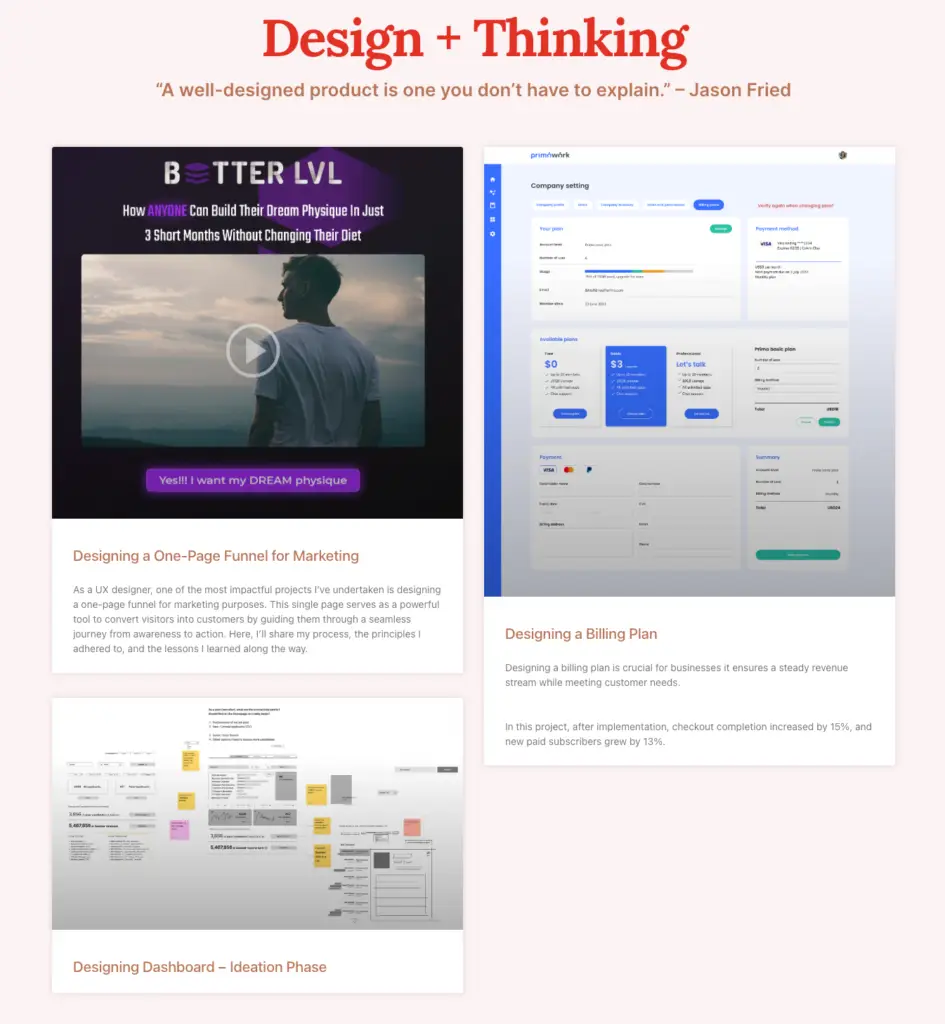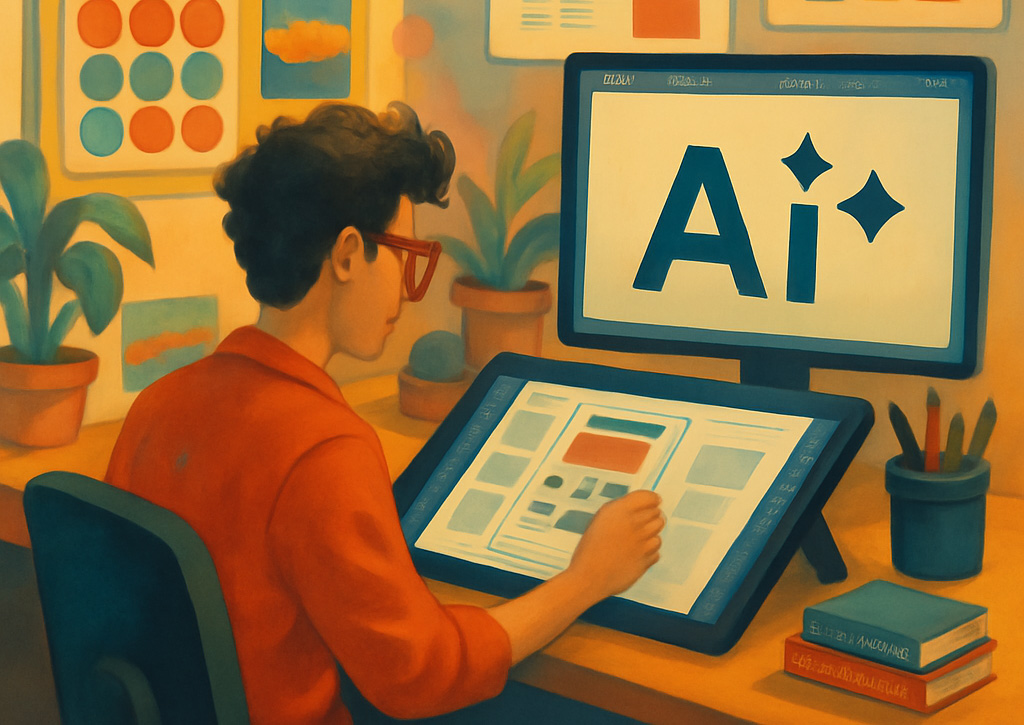Here’s how I shifted my approach and what I learned along the way.
1. Lead with Results, Not Just Design
I used to start my case studies with something like:
“I redesigned the onboarding flow using a more intuitive user journey and improved accessibility.”
Sounds nice, but does it actually say anything meaningful? Not really.
Now, I start with:
“I simplified the onboarding flow and increased user activation by 30%.”
Boom. Straight to the point. It tells hiring managers exactly why my work mattered.
The key takeaway? Always start with impact.
2. Tell the Story (Without the Fluff)
Once I had their attention with a strong result, I made sure to tell the story behind it, but without drowning in UX jargon.
For example, in one project, I noticed a ton of users were bailing at checkout. Instead of just guessing why, I:
- Checked analytics to see where people were dropping off.
- Talked to real users to hear their frustrations.
- Ran A/B tests to find out what actually worked.
The final result? A 15% increase in completed checkouts.
The lesson? It’s not just about what you designed, It’s about why you designed it and how it made a difference.
3. Use Data to Back It Up
Early on, I used to say things like: “I improved the UX of the website.”
Cool, but… how do you prove that?
Now, I always try to bring in numbers:
- Before-and-after metrics “Drop-off rate was 65%, but after my redesign, it dropped to 45%.”
- User insights – “One user told me, ‘I almost gave up because I couldn’t find the checkout button.’ That’s why I moved it.”
- A/B Testing results “Version A had a 12% engagement rate, but my redesign (Version B) boosted it to 18%.”
Metrics give your work credibility. Data beats design buzzwords every time.
4. Ditch the UX Jargon (Seriously, No One Cares)
A big mistake I used to make? Overcomplicating my case studies.
Old me: “I conducted heuristic evaluations and optimized the information architecture.”
New me: “I simplified the menu so users could find things faster.”
Most hiring managers aren’t UX nerds like us. They’re product managers, developers, or executives who just want to know how your work made a difference… not the deep details of your process. Keep it clear and simple.
The Result? More Interviews, More Job Offers
Once I made these changes, my case studies actually started getting noticed.
- My work stood out because it focused on real impact.
- Hiring managers saw me as a problem solver, not just a designer.
- I got way more interviews and job offers.
And honestly? It made me a better UX designer too.
Final Thoughts
If you want to stand out in UX, stop drowning in jargon and start proving your impact. Show how your work made a difference, back it up with data, and keep it simple.
Next time you’re writing a case study, ask yourself:
“Am I just describing my design process, or am I proving how my design made a difference?”
That mindset shift can make all the difference.
My Case Studies Page
Creating case studies takes time, and I struggled to find the time to make a new one. But if you’re hunting for a great UX role, it’s worth it. Having a case study ready means you can confidently showcase your UX process when a hiring manager asks for it.








